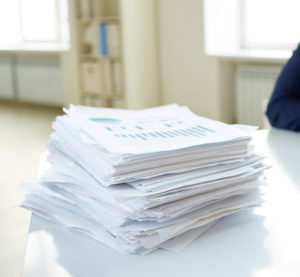 It’s one of the most dreaded parts of discovery for any attorney – the 20,000-page document dump from opposing counsel.
It’s one of the most dreaded parts of discovery for any attorney – the 20,000-page document dump from opposing counsel.
It’s unsorted. It’s unsearchable. It’s unbelievable.
For solo practitioners and attorneys at small firms, these deluges of scanned documents feel like a punch in the stomach, especially when they come on the eve of a key deposition. Some courts have guidelines ostensibly meant to help attorneys avoid the frustration and fruitlessness associated with searches through unstructured electronically stored information (ESI). (See, e.g., United States District Court for the Northern District of California, Guidelines for the Discovery of Electronically Stored Information, available at www.cand.uscourts.gov/eDiscoveryGuidelines, last visited Feb. 14, 2017.)
One of the most important elements of such guidelines is meeting and conferring with opposing counsel early on in the case to set forth some basic rules.
First, some rules specifically allow the requesting party to specify the form in which e-discovery is produced. (See, e.g., FRCP 36(B), CCP 2031.010 et seq.) From a practical standpoint, the requesting party should always request that documents be produced in a de-duplicated, word searchable format with the metadata intact. De-duplication helps the requesting party avoid such dreaded tasks as, for example, sorting through multiple e-mails strings in varying stages of completion. A “word searchable” format allows the responding party to expedite document review with electronic keyword searches, and obviates the need to perform the time-consuming and sometimes unreliable Optical Character Recognition (OCR) process in Adobe. Additionally, document metadata can be a gold mine of information. In Microsoft Word, for example, metadata includes: the date the document was created, the names of the author and most recent modifier, and the dates of any document changes plus the total edit time. This can sometimes be very useful information.
In early meet and confer efforts, required under California Rule of Court 3.724, counsel may be able to work together to come up with a myriad of proactive agreements. Creative thinking, like cooperatively compiling a list of keyword searches to be performed in company email accounts, can ensure neither side is left blindsided by an unexpected document dump.
Before starting as an attorney at Lawless & Lawless, Emily McGrath was a misdemeanor trial attorney at the San Francisco Public Defender’s Office. She attended law school at University of California, Hastings College of the Law where she was a teaching assistant, research assistant, and law review editor.

